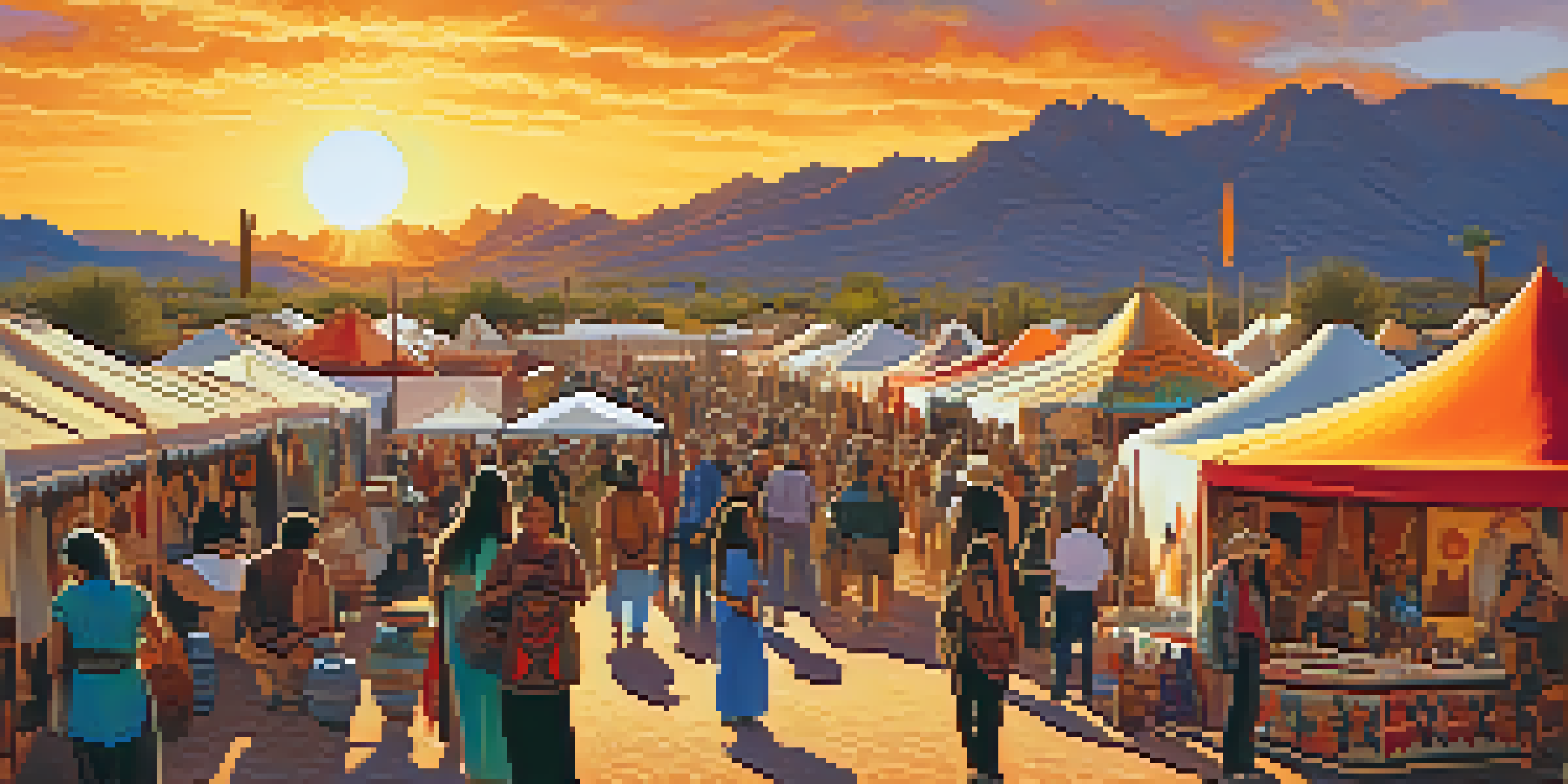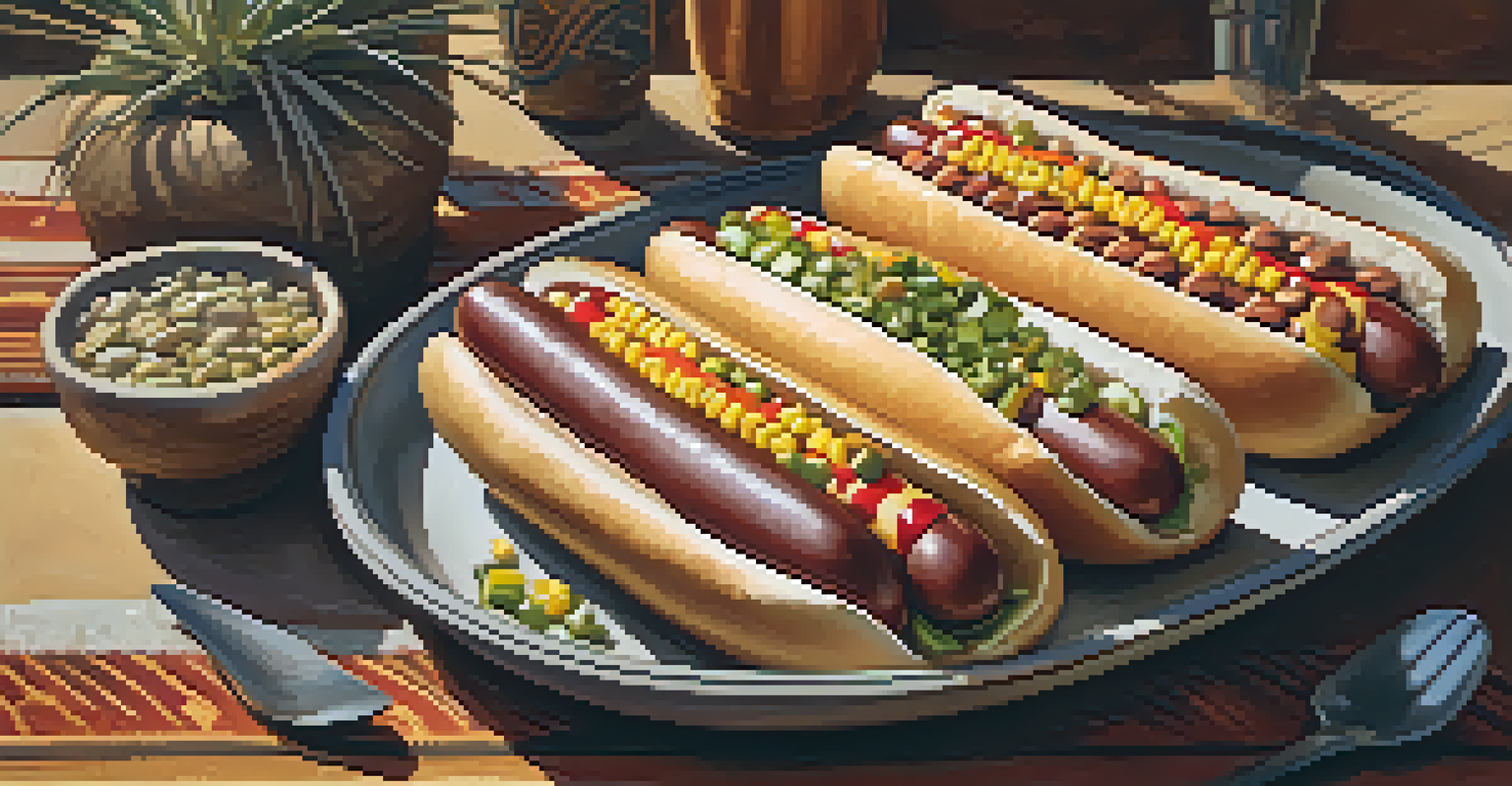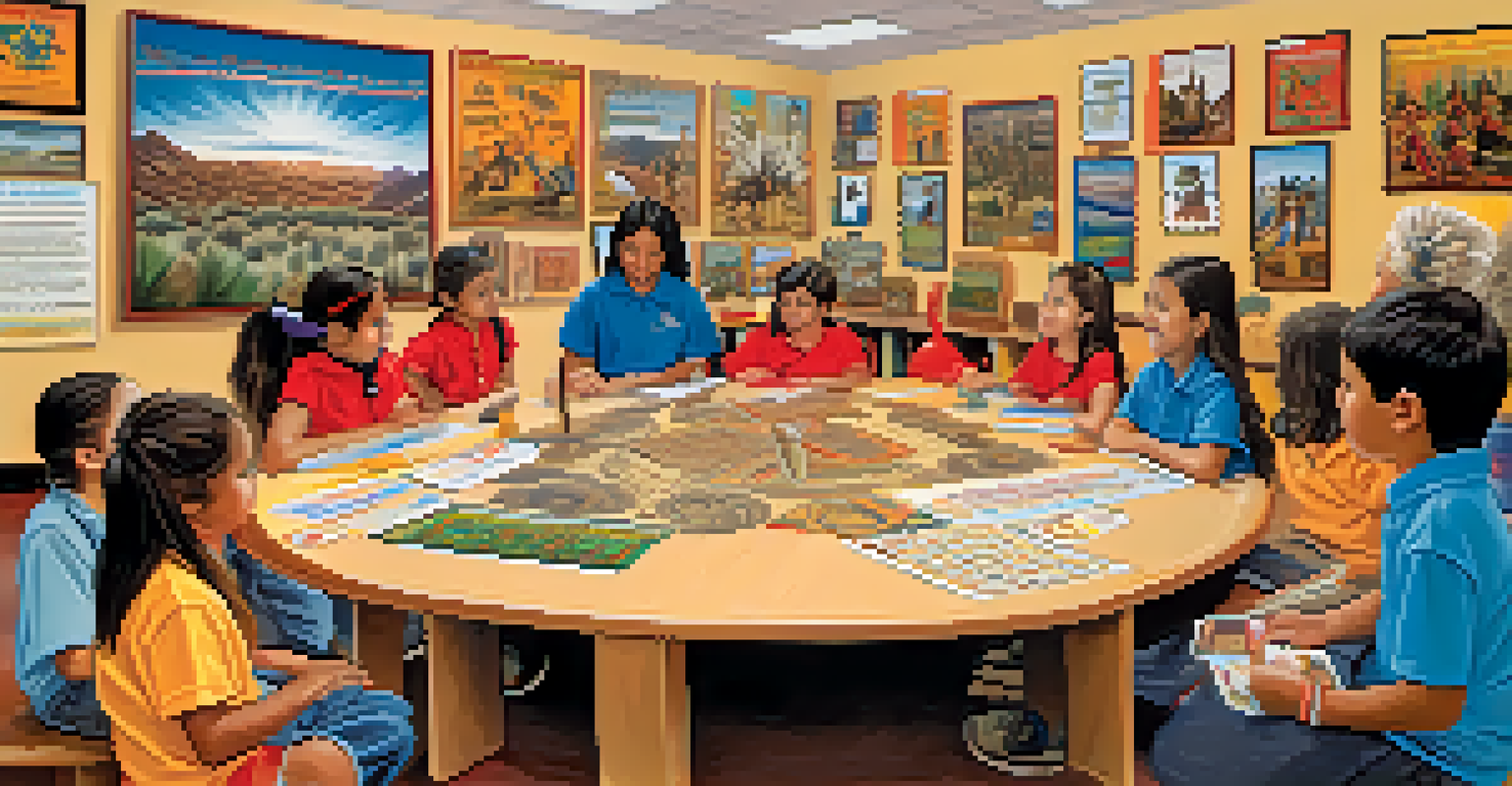Cultural Exchange Between Tucson and Native American Tribes

Historical Context of Tucson and Native American Tribes
Tucson, nestled in the Sonoran Desert, has a rich tapestry of history that intertwines with Native American tribes. For centuries, tribes such as the Tohono O'odham and Pascua Yaqui have called this region home. Their traditions, languages, and customs have shaped not only the cultural landscape of Tucson but also its identity.
Art is the most beautiful of all lies; it is the most beautiful of all truths.
By understanding this historical context, we can appreciate the depth of connections that have formed over the years. The influence of Native American cultures is evident in local art, festivals, and even culinary practices. This blending of histories offers a fascinating lens through which to view Tucson's development.
As we delve deeper into the cultural exchange, it’s important to recognize how these relationships have evolved. From trade and shared resources to collaborative events, the interactions between Tucson's residents and Native tribes reflect a vibrant tapestry of mutual respect and learning.
Art and Expression: A Shared Journey
Art serves as a powerful medium for cultural exchange, allowing stories and traditions to flourish. In Tucson, local galleries often feature Native American artists, showcasing their unique perspectives and techniques. This collaboration not only highlights the beauty of indigenous artistry but also fosters a greater appreciation for their cultural narratives.

Moreover, events like the Tucson Festival of Books and local art fairs provide platforms for Native artists to share their work with broader audiences. These events encourage dialogue and understanding, allowing attendees to immerse themselves in the richness of Native cultures. Through art, both Tucsonans and Native tribes celebrate their shared heritage.
Cultural Exchange Enriches Tucson
The interactions between Tucson residents and Native American tribes have created a vibrant cultural tapestry that enhances the identity of the city.
The blending of artistic styles often leads to innovative creations that reflect the essence of both cultures. For instance, pottery or jewelry may incorporate traditional designs while also embracing modern elements, creating pieces that resonate with a diverse audience. This fusion underscores the idea that cultural exchange is not just about preservation but also about evolution.
Language Revitalization Efforts in Tucson
Language is a cornerstone of culture, and efforts to revitalize indigenous languages are vital in Tucson. Organizations and community groups have initiated programs to teach languages like O'odham and Yaqui, ensuring that these rich linguistic heritages continue to thrive. By engaging younger generations, they foster a sense of identity and connection to their roots.
Food is our common ground, a universal experience.
Classes and workshops often blend traditional teachings with modern methods, making learning accessible and engaging. For instance, storytelling sessions that incorporate language learning allow participants to connect with both the language and the culture on a deeper level. Such initiatives not only preserve languages but also strengthen community bonds.
Furthermore, bilingual signage and cultural events in Tucson promote awareness and respect for Native languages. As residents learn about and embrace these languages, it fosters a community that values diversity and inclusion. This effort exemplifies how cultural exchange can lead to a more harmonious coexistence.
Culinary Fusion: Food as a Cultural Bridge
Food has an incredible way of bringing people together, and Tucson is no exception. The culinary scene here is a testament to the influence of Native American cuisines, which have spiced up local flavors for generations. Ingredients like corn, beans, and squash are staples not only in traditional Native dishes but also in contemporary Tucson cuisine.
Many local restaurants celebrate this fusion by featuring Native-inspired dishes alongside Mexican and American favorites. For example, a modern twist on Sonoran hot dogs may include Native ingredients, creating a unique dining experience that honors both cultures. This culinary exchange showcases how traditions can evolve through collaboration.
Art and Food Unite Communities
Local art and culinary scenes showcase the influence of Native American traditions, fostering appreciation and collaboration among diverse cultures.
Moreover, food festivals often highlight Native American chefs and their contributions to the local culinary landscape. These events serve as a platform for sharing traditional recipes and cooking techniques, encouraging attendees to explore the rich flavors of Native cuisine. This delicious intersection of cultures emphasizes the importance of food in cultural exchange.
Celebrating Traditions: Festivals and Events
Tucson is vibrant with festivals that celebrate the shared heritage of its communities, especially with Native American tribes. Events like the Tucson Rodeo and the All Souls Procession often include Native performances, music, and art, showcasing the richness of indigenous culture. Such celebrations create a space where people of all backgrounds can come together and learn.
These festivals not only honor Native traditions but also allow Tucsonans to engage directly with Native communities. Through dance, storytelling, and traditional ceremonies, attendees gain insight into the cultural practices that have been passed down through generations. This interaction fosters respect and understanding between diverse groups.
Additionally, events like the Tohono O'odham Nation's cultural celebrations invite Tucson residents to experience Native traditions firsthand. By participating in these gatherings, attendees can appreciate the significance of cultural practices, creating lasting memories and connections. This sense of shared celebration strengthens the cultural fabric of Tucson.
Education and Awareness: Bridging Cultures
Education plays a crucial role in fostering awareness and understanding between Tucson residents and Native American tribes. Schools in Tucson are increasingly incorporating Native American history and culture into their curricula, helping students appreciate the contributions of these communities. This educational approach lays the groundwork for mutual respect and collaboration.
Field trips to local cultural centers and museums provide students with firsthand experiences of Native traditions and histories. By engaging with Native educators and artists, students are encouraged to ask questions and gain deeper insights. This experiential learning fosters a sense of connection and empathy.
Education Fosters Understanding
Incorporating Native American history and culture into education helps bridge cultural gaps and promotes mutual respect within the Tucson community.
Moreover, community workshops and lectures often invite Native speakers to share their stories and experiences. These initiatives not only enrich the educational landscape but also empower Native voices within the community. By bridging cultural gaps through education, Tucson is nurturing a more inclusive and aware society.
The Future of Cultural Exchange in Tucson
As Tucson continues to evolve, the potential for cultural exchange with Native American tribes remains promising. Ongoing collaborations in art, education, and culinary initiatives are paving the way for deeper connections. The future holds opportunities for Tucsonans to learn from and engage with Native cultures in meaningful ways.
Embracing diversity and fostering open dialogue can lead to innovative partnerships that benefit both communities. By supporting local Native businesses and artists, Tucson residents can contribute to a thriving cultural landscape that honors the past while looking ahead. This proactive approach will ensure that cultural exchange remains a vital aspect of Tucson's identity.

Ultimately, the journey of cultural exchange is one of growth and understanding. As Tucson and its Native American tribes continue to build relationships, the richness of their shared heritage will flourish. By valuing and celebrating these connections, Tucson can become a true model of harmonious coexistence.